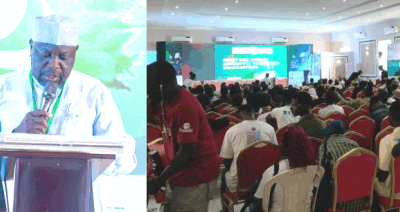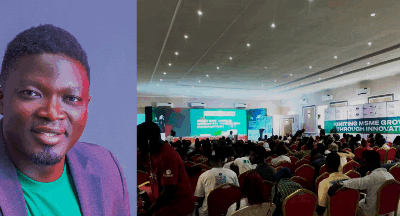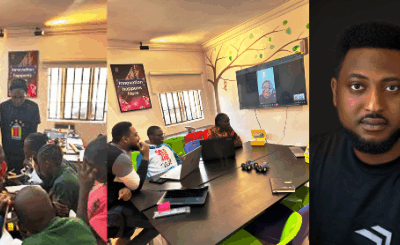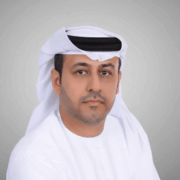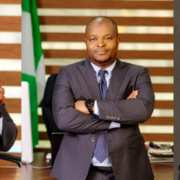ACE will change market dynamics
Mr. Lamin Camara, Deputy-Permanent Secretary, Ministry of Information and Communication Infrastructures, Gambia spoke with eT Edge News (Segun Oruame) in Banjul, The Gambia on the ACE cable.
A lot of people with cynical perspectives think that it is more of hype and little results when it comes to submarine cables in Africa. ACE has been launched. We have the Glo-1, MainOne, EASSY and several others but there is still no bandwidth. What has been your experience with ACE since it was launched in the Gambia?
The challenge is at the end users end. The ability of the end users to exploit the numerous bandwidths they can get from the submarine cable is still limited. The capacity is there but the end users ability at accessing the bandwidth is where the challenge is vis a vis the local infrastructure and end users devices, like customer’s premises equipment. For example, in the Gambia, we have the cable and the station, we have fibre that can backhaul it to the relevant operators premises, however some of the operators do have constraints in their local network to really exploit the potential bandwidth ACE is bringing to the country. We need to evolve away from some of these things and to do that it requires investment and time. I think people need to be patient; they need to give the operators time to adjust themselves to a position whereby they can exploit the bandwidth the submarine cable is bringing. We already have a project going on for the fibre infrastructure in the country under the ECO 1 project which will provide fibre cable around the country about 870 km, still even if you have that national transmission, the end users making use of it could still be a challenge. It always and still requires huge investment.
Is government intervening in terms of investing to close the gap or is it leaving everything solely for private sector investment to flow in?
This is what I mentioned early about the national transmission backbone through government intervention. We got a loan from IDB to deliver fibre around the country which would be on an open access basis to all the operators. This is what government did also to the submarine cables whereby they entered into a public partnership with the private sector to be able to construct this cable landing station here. Government has gone into a pre financing arrangement for the private sector, government gets the money from the World Bank to implements it and give a lay away plan to the private sector for about seven years to be able to pay their contribution.
In terms of policy and framework, what really is the policy of the Gambian government for bandwidth rollout?
Right now we are working on that as part of the West Africa Communication Infrastructure project that really supported the funding of the landing station. We have the component that is to create the enabling environment. Under that component we are working on the development of broadband demand stimulation strategy to take into recognition the issue I raised in our bandwidth usage rollout and access, and how the capacity will be priced and at the same time how access to the capacity will be priced. We are moving towards all that to make sure that we have the adequate regulatory framework to harness the benefits of the submarine cable in the country.
When will broadband access reach the ordinary citizen, what timeframe are you looking at?
Our target is towards 2015. We are hopeful we will make a lot of impact before that time. We have already started initiatives whereby we will provide public access centres in rural areas whereby people that cannot afford internet in their houses can at least have a place they can go to and make use of the internet. Right now, we have about three or four in the provinces and we are working on another three. The other option we are looking at is the creation of the universal service funds. Right now, we are in the course of developing the policy and creating the funds, the fund will be used to improve access in areas that are lacking access particularly focusing on the rural areas. We are also trying to pilot a new project called GSM Wall technology whereby you can have a technology which efficient energy requirement is solar power to power the infrastructure they have and extend broadband reach and in some place the GSM infrastructures. We are working on doing a pilot with a company to see how effective it will be. We are cognizance of the need to provide access to most of the population especially in the rural areas and we are looking at various measures, it does not definitely leave out the use of wireless technologies.
The ACE consortium is government and private sector driven, what is that framework like in terms of ownership?
This is the first public-private partnership in the country. We really want to make it work. First, I will like to commend the government who is bold enough to accept the participation of the private sector in this important milestone in the development of the telecommunication infrastructure in the country and at the same time commend the private sector also for having the confidence and trust to join the government in this endeavour. Since we did that, we first of all get into the creation of memorandum of agreement which gives the terms and conditions of the partnership which evolve into the creation of a consortium agreement and eventually the Gambia Submarine Company which is co-owned by the public and private sector with respective shares of 49% and 51%. We are trying to firm up the organisational structures of the Gambia Submarine Cable Company in order to really make use of the submarine cable advantages in the country. The Gambia Submarine Cable is 100% under the ACE consortium, collectively we own it and we are working together although there are challenges but we are hopeful things would shape out. One of the major developments or objectives of this project is to liberalise the international gateway which you know in those countries it is not an easy task to really accomplish. For the countries it had happened there was also some grace period for the government to adjust itself in readiness for the new competitive environment but in the Gambia rather going through that approach of getting a grace period, government decides to take a gradual approach whereby they will give out the data gateway to the private sector and then move to the full version of the voice gateway. So that licence was issued on the 21st of May – That is an important step towards liberalizing the process.



